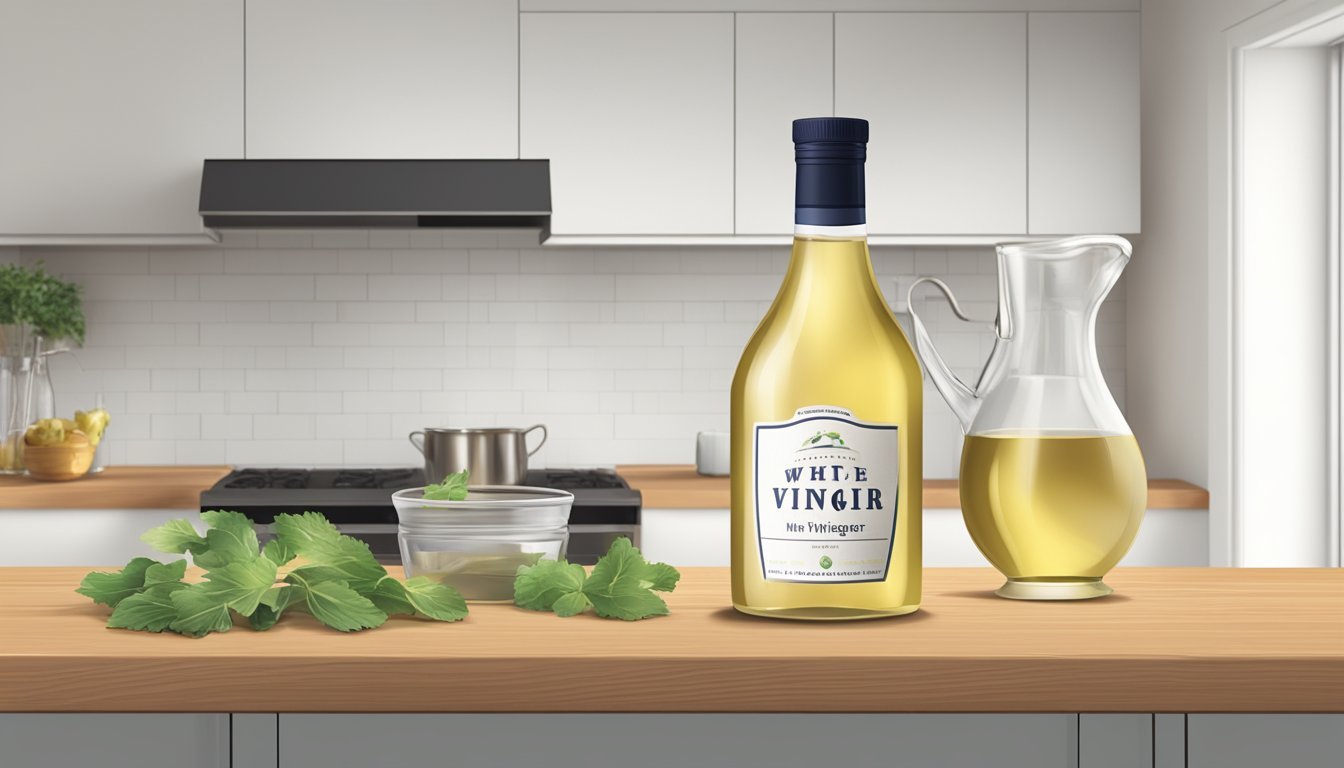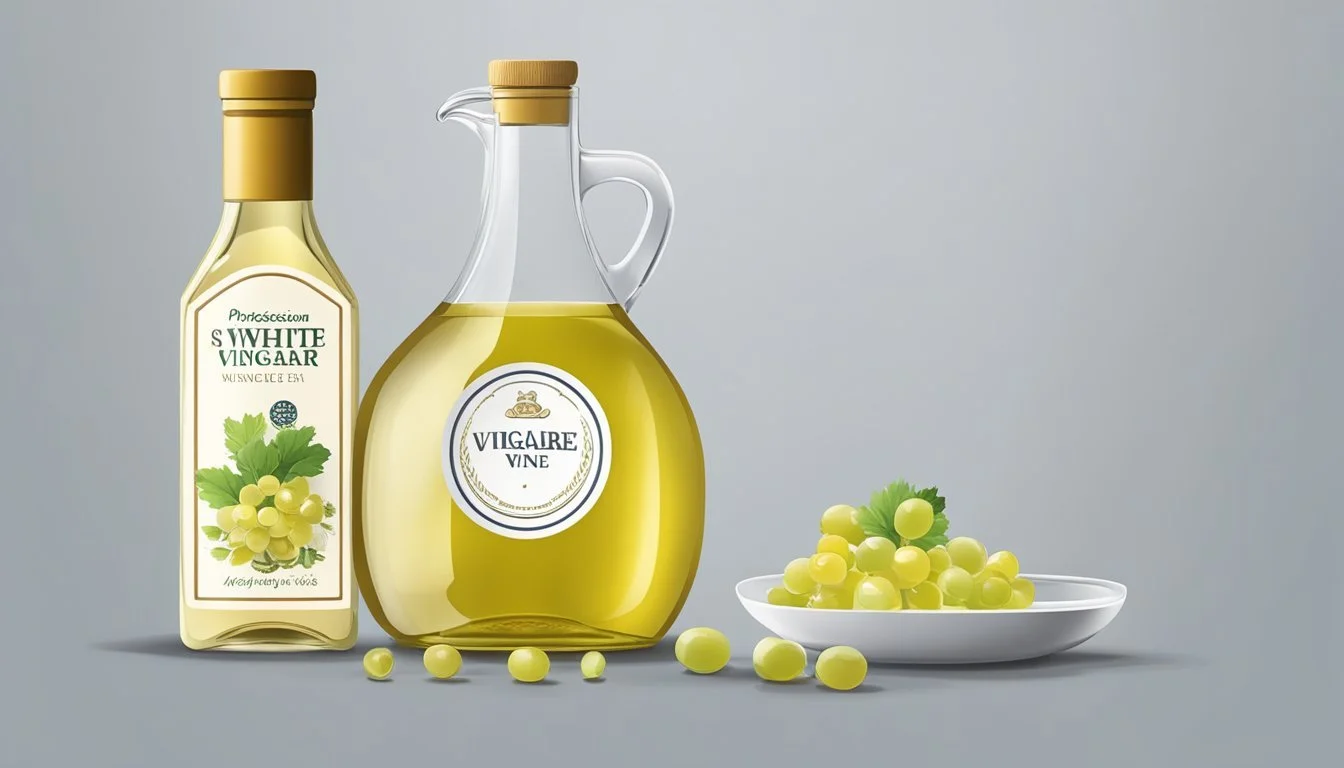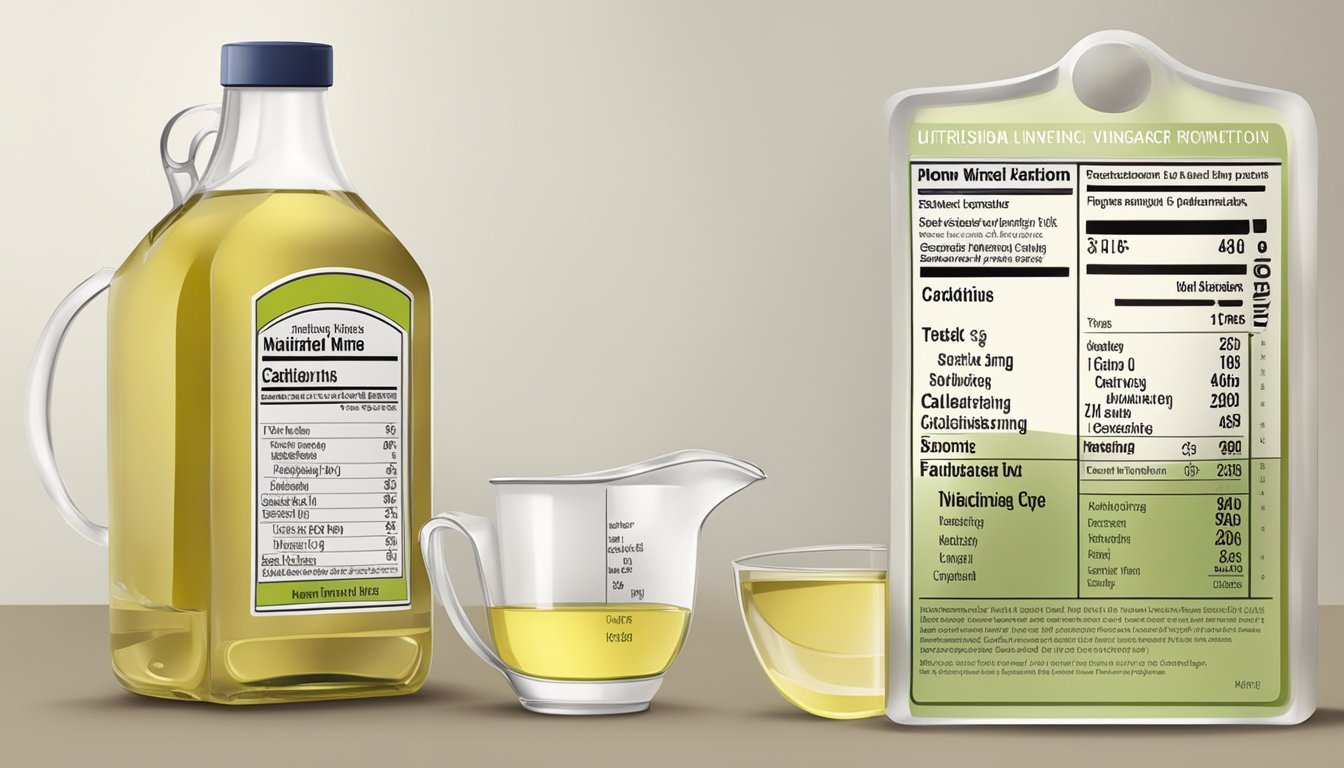How Many Cups of White Wine Vinegar Per Day Is Too Much?
Understanding Safe Consumption Limits
Determining the appropriate amount of white wine vinegar to consume daily hinges on various factors, including individual health considerations and dietary patterns. White vinegar, commonly white wine vinegar, is widely used for culinary purposes, often employed to enhance flavors or as a key ingredient in dressings and marinades. While it's recognized for some potential health benefits, such as its antimicrobial properties and possible positive effects on blood sugar levels, moderation is key, as with any food substance.
Excessive intake of white wine vinegar could lead to adverse effects, reflecting the importance of understanding the limits. Nutritional guidelines on vinegar consumption are not as clearly established as those for other food and beverage items, but experts generally agree that small quantities, typically ranging from a teaspoon to a tablespoon, used in cooking or dressings, are sufficient for flavor without posing health risks. However, when it comes to drinking vinegar for perceived health benefits, caution is advised due to its acidic nature, which can potentially cause digestive issues and erosion of tooth enamel.
Understanding White Wine Vinegar
White wine vinegar is a popular acidulating liquid made from fermented white wine. The production process involves the transformation of alcohol into acetic acid with the help of acetic acid bacteria. This substance, commonly referred to as 'the mother,' turns white wine into vinegar over time. White wine vinegar, as a result, possesses a delicate yet distinct flavor, setting it apart from stronger vinegars like white vinegar.
Composition:
Acetic Acid: Typically 5-7% concentration
Flavor Profile: Milder than white vinegar
Alcohol Content: Negligible; alcohol is converted during fermentation
Unlike balsamic vinegar or apple cider vinegar, which originate from grape must and apple juice respectively, white wine vinegar starts with white wine as its base. This starting point is reflected in the final product's subtler flavor and aroma.
Usage:
Culinary: It's a favored ingredient in dressings, marinades, and pickling solutions.
Cleaning: Its mild acidity suits various domestic cleaning purposes.
Types of Vinegar for Comparison:
Balsamic Vinegar: Derived from grape must; sweeter and thicker
Apple Cider Vinegar: Made from apple juice/cider; fruitier taste
White Vinegar: Higher acidity; more robust cleaning agent
Rice Vinegar: Made from fermented rice; sweeter and milder than white vinegar
In considering health and nutrition, the consumption of white wine vinegar is generally safe in moderate amounts. However, the precise quantity that could be deemed excessive has not been established and may vary from person to person. It is not typically consumed in large volumes but rather used as a flavor enhancer or preservative in foods.
Daily Consumption Guidelines
Vinegar, including white wine vinegar, is widely recognized for its culinary and potential health benefits. However, it should be consumed in moderation due to its acidity which can be harmful in excessive amounts. The exact limits have not been officially established, but guidelines suggest modest amounts akin to what is found in salad dressings or marinades.
Recommended Limits for Men
National Institute on Alcohol Abuse and Alcoholism (NIAAA): For alcoholic beverages, the NIAAA advises that men consume no more than 4 drinks per day and 14 drinks per week.
Dietary Guidelines for Americans: Suggests that if alcohol is consumed, it should be in moderation, which they define as up to 2 drinks per day for men.
Recommended Limits for Women
NIAAA: For women, the suggested limit is lower, no more than 3 drinks per day and 7 drinks per week.
Dietary Guidelines for Americans: Recommend that women who consume alcohol do so in moderation, defined as up to 1 drink per day.
For both men and women, one drink is commonly considered to be 5 ounces of wine, which closely relates to the amount of alcohol present in other types of standard drinks. When considering vinegar, which is non-alcoholic, men and women should ensure their intake does not cause discomfort or digestive issues, with an eye to the acidic nature of vinegar and overall dietary balance.
Health Implications of Overconsumption
While moderate consumption of white wine vinegar generally poses no significant health risk, overindulgence could lead to negative health implications. Understanding the potential short-term and long-term health risks is critical for maintaining well-being.
Short-Term Health Risks
Excessive intake of white wine vinegar in a short period may lead to gastrointestinal discomfort, such as nausea and indigestion. Although not an alcoholic beverage, the acidity of the vinegar can irritate the stomach lining, potentially resulting in heartburn or gastritis.
Long-Term Health Effects
Over time, regularly consuming large amounts of white wine vinegar could potentially contribute to more serious health issues. The high acidity may affect the esophageal lining and could aggravate conditions such as acid reflux. Persistent acid reflux is associated with an increased risk of Barrett's esophagus, a condition that may lead to esophageal adenocarcinoma, a type of cancer. Additionally, excessive consumption of any type of vinegar can lead to hypokalemia, a condition characterized by low potassium levels, which in turn can cause heart rhythm problems. Overuse may also stress the liver and kidneys as these organs work to process and filter out the excess substances.
Potential Benefits of Moderate White Wine Vinegar Intake
Moderate consumption of white wine vinegar may offer health benefits, particularly in the areas of cardiovascular health and metabolic influence. These benefits are generally attributed to the presence of antioxidants and other compounds that can affect bodily functions.
Cardiovascular Health
Moderate white wine vinegar intake is linked with better cardiovascular health. Antioxidants found in white wine vinegar can help reduce cholesterol levels, a key factor in maintaining heart health. Specifically, the acetic acid in vinegar is known to improve blood pressure and lipid profiles, which are critical for preventing heart diseases and strokes.
Metabolic Influence
When it comes to metabolism, white wine vinegar exhibits potential benefits in blood sugar regulation and weight management. Consuming white wine vinegar with meals may lower the glycemic index of foods, thereby assisting in controlling insulin spikes and aiding in the management of type 2 diabetes. Additionally, its appetite-suppressing properties can support weight loss efforts by reducing short-term food intake.
Comparative Analysis of Alcoholic Drinks
When comparing alcoholic drinks such as wine, beer, and hard liquor, it is important to consider the alcohol content, calorie count, and how they fit into drinking habits.
Wine Versus Beer
Wine and beer vary greatly in terms of both alcohol content and caloric impact. A standard glass of wine, typically 5 ounces with 12 percent alcohol by volume (ABV), contains roughly 120 to 125 calories with variations depending on whether it is red wine or white wine. In contrast, a 12-ounce serving of beer at 5 percent ABV holds about the same alcohol amount but can range from 100 to 200 calories, with lighter beers on the lower end of the scale. Wine drinkers might prefer the taste and antioxidants present in wine, while beer drinkers might point to beer's variety of flavors and lower alcohol concentration per ounce.
Alcohol Content Comparison:
Wine (5 oz): 12% ABV
Beer (12 oz): 5% ABV
Caloric Content Comparison:
Red/White Wine (5 oz): ~120-125 calories
Beer (12 oz): ~100-200 calories
Wine Versus Hard Liquor
Comparing wine to hard liquor, one finds pronounced differences in alcohol concentration and drinking patterns. A 1.5-ounce shot of hard liquor at 40 percent ABV carries a similar amount of alcohol as a 5-ounce glass of wine, yet with only about 97 calories, which largely counts as "empty calories" due to the minimal nutritional value. This makes hard liquor more calorie-efficient but potentially more dangerous due to higher alcohol content per volume, which can affect drinking habits by encouraging faster intoxication. Wine consumers might opt for a moderate consumption of one to two glasses for potential health benefits, while hard liquor is frequently consumed in smaller amounts due to its strength.
Alcohol Content Comparison:
Wine (5 oz): 12% ABV
Hard Liquor (1.5 oz): 40% ABV
Caloric Content Comparison:
Wine (5 oz): ~120-125 calories
Hard Liquor (1.5 oz): ~97 calories
Wine, whether red or white, is often associated with a concept of moderate drinking habits partially due to the cultural context and perceived health benefits when consumed in moderation.
Nutritional Content and Caloric Information
White wine vinegar is a staple condiment in many kitchens, known for its sharp taste and preservative qualities. It's made by fermenting white wine into vinegar, a process that changes the nutritional profile significantly. Unlike white wine, white wine vinegar contains negligible amounts of sugar and carbohydrates.
The caloric content of white wine vinegar is minimal. One tablespoon (about 15ml) typically contains approximately:
Calories: 3
Sugars: 0g
Carbohydrates: 0.1g
Protein: 0g
Given its low calorie and sugar content, white wine vinegar is a diet-friendly ingredient. It's commonly used to add flavor without contributing significantly to daily calorie intake. Vinegar can add a zesty kick to salads, marinades, and sauces while promoting a sensation of fullness.
Despite being low in calories and nutrients, white wine vinegar may have an impact on weight gain if consumed excessively due to its acidity. Regular, high consumption of acidic foods and beverages can potentially lead to digestive discomfort and intolerance in some individuals. They should consider their own tolerance when incorporating vinegar into their diet.
White wine vinegar contains trace amounts of minerals such as potassium but is not a significant source of vitamins. It is also free from fats and cholesterol. As part of a balanced diet, white wine vinegar can be a favorable addition to meals, though it should be used in moderation due to its high acidity.
Influence of Drinking Habits on Mental and Emotional Health
The quantity and frequency of consuming substances like white wine vinegar can greatly affect an individual's mental and emotional health. At moderate levels, drinking habits appear to have a nuanced relationship with mental well-being. For instance, routine consumption of low amounts of acidic beverages could contribute to a stable mood, whereas excess intake might lead to negative mental health outcomes.
Mental health is multifaceted and includes emotional, psychological, and social well-being. It influences how individuals think, feel, and act. When discussing the context of vinegar consumption, it is crucial to understand that any substance ingested in large quantities could potentially disturb the body's balance and affect mental health.
Mood disturbances can occur due to dietary choices that cause inflammation or disrupt gut health. The gut-brain axis is a well-documented pathway through which gut inflammation can affect the central nervous system, thereby altering mood and cognitive functions. Thus, it is imperative to consider how drinking habits might contribute to systemic inflammation.
Although more commonly associated with other lifestyle factors, Alzheimer's disease, a chronic neurodegenerative condition, has also been linked to the body's inflammatory responses. Diet-related inflammation might influence the progression or risk of such diseases, albeit further research is necessary to establish a direct connection.
In summary, an individual's drinking habits can affect their mental health, mood, and potentially influence the risk of conditions related to inflammation, such as Alzheimer's disease. It is therefore advisable for individuals to be mindful of their consumption levels to maintain optimal mental and emotional health.
Cultural and Dietary Contexts of White Wine Vinegar Use
White wine vinegar, derived from fermented white grapes, holds a place in various culinary traditions and has historical roots in healthcare practices. It is a versatile ingredient with both dietary and cultural significance.
Culinary Uses in Different Cuisines
Mediterranean Cuisine: In Mediterranean countries, white wine vinegar is a staple ingredient, often used to create zesty vinaigrettes that dress salads and to enhance the flavor of cooked vegetables and meats. The acidic nature of the vinegar complements the rich flavors of olive oil and fresh herbs typical in this region. For example:
Greek Salad: White wine vinegar is used to add brightness to the blend of cucumbers, tomatoes, and feta cheese.
Italian Bread Dipping Sauces: It's combined with olive oil and spices as a flavorful dip for bread.
Japanese Cuisine: Though not as prevalent as rice vinegar, white wine vinegar can be found in the preparation of certain Japanese dishes. Its delicate taste is sometimes preferred for:
Sushi Rice Seasoning: A touch of white wine vinegar can be used to season sushi (What wine goes well with sushi?) rice, providing a subtle tang without overpowering the flavor of the fish and seaweed.
Historical Significance
White wine vinegar has been used historically as more than just a culinary ingredient. In healthcare, it has been utilized for its antiseptic properties, possibly due to its acetic acid content.
Ancient Preservative: Its ability to inhibit bacterial growth made it valuable for preserving food before refrigeration was available.
Home Remedies: Historically, it may have been included in traditional remedies for skin conditions and other minor health issues.
White wine vinegar continues to be an important part of both culinary heritage and daily diets, reflecting its multifaceted use across different cultures and historical eras.
Guidance From Health Organizations
Renowned health organizations such as the American Heart Association and the Mayo Clinic provide guidelines to ensure safe and healthy consumption habits. They focus on mitigating health risks associated with excessive intake and emphasize moderation within the context of an individual's overall healthcare plan.
American Heart Association's Stance
The American Heart Association (AHA) does not provide specific recommendations for the consumption of white wine vinegar. However, the AHA stresses the importance of moderation in the context of overall dietary patterns. Vinegar, which is a fermented product like alcohol, should be consumed in small quantities. The AHA focuses more broadly on healthy eating patterns that support cardiovascular health and recommends consulting healthcare professionals when considering dietary changes.
Mayo Clinic Recommendations
The Mayo Clinic does not explicitly state the optimal quantities of white wine vinegar for daily consumption. Yet, they advocate for a balanced diet that can include various foods and condiments in moderation. The Mayo Clinic suggests that individuals should take into account their personal health conditions and dietary needs when determining appropriate levels of any food product consumption. They recommend consulting with healthcare practitioners to align dietary choices with health goals and medical guidance.
Understanding Labels and Serving Sizes
When considering the intake of white wine vinegar, it's essential for a person to pay attention to labels and serving sizes. Serving sizes provide guidance on the amounts typically consumed at one time, and for white wine vinegar, this is often listed in tablespoons (tbsp).
Typical Serving Size: 1 tbsp (14.9 ml)
White wine vinegar, like other vinegars, contains sulfites – naturally occurring compounds that can also be added to prevent oxidation and spoilage. While sulfites are generally safe for most people, those with sensitivities should monitor their intake closely, as high levels can worsen symptoms like asthma.
The concept of "one drink a day," often discussed in the context of alcoholic beverages, does not translate directly to vinegar consumption due to its non-alcoholic nature and different usage. Instead, servings of white wine vinegar are used in a culinary context, such as dressings and marinades.
Component Recommended Serving Notes Sulfites Check label; monitor for sensitivity Some individuals may be sensitive to sulfites. White Wine Vinegar 1-2 tbsp for culinary use Larger amounts should be approached with caution.
It's advisable for anyone to not exceed a few tablespoons of white wine vinegar daily, as excessive consumption may lead to adverse health effects. Always consult with a healthcare provider for personalized recommendations, especially for those with pre-existing health conditions.
Conclusion
When considering the consumption of white wine vinegar, moderation is key. One should be aware that it contains acetic acid, which, when consumed in excessive amounts, can lead to adverse health effects.
Recommended daily intake is not specifically established, but general nutritional guidelines suggest that small quantities, such as a few teaspoons per day, are sufficient to enjoy any potential benefits without risking negative effects on health.
For a balanced diet, one could incorporate white wine vinegar into their meals by:
Dressing salads with a vinaigrette containing a teaspoon of white wine vinegar.
Marinating meats, where a tablespoon can be part of the mixture.
Using it as a condiment, adding a splash to enhance flavor.
It's important for anyone with health concerns, especially digestive or renal issues, to consult with healthcare professionals before making white wine vinegar a regular part of their diet. They possess the necessary expertise to provide personalized recommendations based on individual health status.
Individuals should also be cautious not to confuse white wine vinegar with white wine consumption. While white wine vinegar is used in food preparation and is non-alcoholic, white wine is an alcoholic beverage, and intake recommendations differ significantly.
In any case, one should be attentive to their body's reactions to white wine vinegar and adjust their intake accordingly, ensuring it complements a diverse and balanced diet.













